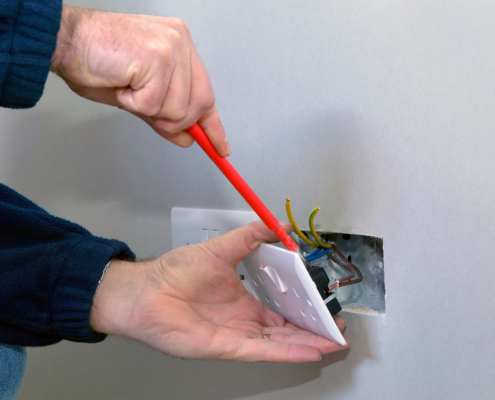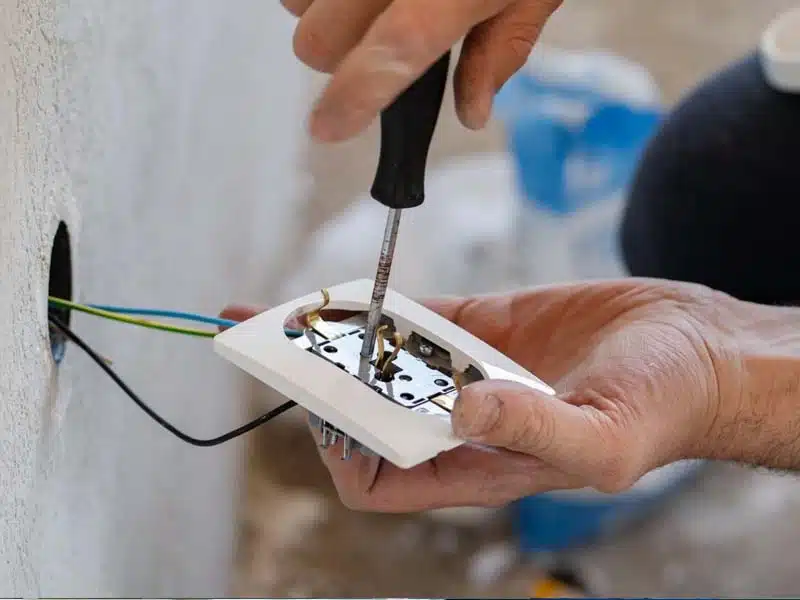Customized BRE Electrical Solutions for Residences and Services
Wiki Article
Demystifying Electrical Setup: Understanding Codes and Laws for a Lawful and Safe Arrangement
In the world of electrical setup, adherence to codes and guidelines is critical to guarantee both legality and safety and security. The complexities bordering electrical work can be overwhelming, but acquainting oneself with the established requirements is vital to navigating this area with self-confidence. By comprehending the ins and outs of the National Electric Code and regional building regulations, people can guarantee that their installations fulfill needed safety and security actions and are in conformity with the law. The trip to debunking electrical installation goes beyond plain familiarity with laws; it necessitates a profound understanding of how to implement secure electric techniques effectively.Importance of Electrical Codes
The adherence to electric codes is critical in ensuring the safety and dependability of electric installations. Electrical codes act as a set of requirements and standards that determine the proper style, setup, and maintenance of electrical systems. These codes are developed to reduce the danger of electrical dangers, fires, and various other safety issues that might develop from malfunctioning electric job.
Additionally, electric codes are on a regular basis updated to include new innovations, best techniques, and safety steps. Remaining updated with these codes is necessary for professionals in the electrical sector to make certain that their work meets the most current safety and security criteria. Ultimately, the importance of electrical codes exists in developing a safe and secure and reliable electrical infrastructure that profits both people and neighborhoods.
Trick Rules for Security
A number of fundamental regulations regulate the safety and security standards in electric installments. One vital law is the National Electric Code (NEC), which provides standards for secure electrical layout, setup, and assessment to secure individuals and residential or commercial property from electrical risks. The NEC covers aspects such as wiring approaches, grounding, overcurrent defense, and devices installment to make sure a safe electrical system.Another crucial law is the Occupational Safety and Health And Wellness Management (OSHA) requirements, which focus on the safety of workers involved in electrical installments (BRE Electrical Melbourne). OSHA policies consist of requirements for proper training, security treatments, and personal safety devices to prevent workplace accidents and injuries
Moreover, the International Electrotechnical Compensation (IEC) requirements aim to harmonize electrical installment guidelines on an international scale. These standards address issues like electrical tools safety and security, electromagnetic compatibility, and energy performance to promote uniformity and security in electrical installations worldwide.
Conformity with these vital regulations is necessary to guarantee the safety and validity of electrical setups, securing both individuals and home from the dangers related to electrical energy.
Recognizing National Electric Code
Trick laws such as the National Electrical Code (NEC) offer important standards for risk-free electric layout, installation, and inspection to make certain the defense of individuals and building from electrical risks. The NEC, additionally known as NFPA 70, is a thorough set of requirements for electrical installations that are upgraded every 3 years. It is established by the National Fire Protection Association (NFPA) and is extensively embraced throughout the United States.The NEC covers different facets of electrical work, including electrical wiring approaches, grounding, overcurrent security, and devices setup. It aims to safeguard individuals and home by attending to potential threats connected with electric systems. Compliance with the NEC is normally implemented by local authorities having territory (AHJs), such as developing code officials and inspectors.
Understanding the NEC is essential for electrical contractors, developers, and assessors to guarantee that setups satisfy the needed safety needs. By sticking to the NEC guidelines, specialists can assist prevent electric accidents and make certain the reliability of electrical systems in property, business, and industrial settings.

Conformity With Regional Building Ordinance
Understanding and sticking to local building codes is vital for ensuring the safety and compliance of electrical installments within a particular jurisdiction. These codes lay out certain needs for electric installations, such as the kind of wiring to be made use of, positioning of electrical outlets, basing approaches, and load capacities.
When it pertains to electrical installments, failing to abide by regional building regulations can lead to major consequences. Non-compliant installations might posture security hazards, enhance the threat of electrical fires, and bring about expensive fines or lawful concerns. Additionally, insurer may decline to cover problems resulting from installations that do not satisfy neighborhood building ordinance demands. It is important for electrical experts and contractors to stay informed around and purely stick to the neighborhood building codes suitable to their tasks.
Making Certain Safe Electric Practices
Exercising rigorous adherence to developed safety procedures is important in the field of electrical installments to minimize possible dangers and guarantee the wellness of individuals and buildings. Safety in electrical job encompasses numerous facets, beginning BRE Electrical with the proper training of personnel involved in installation, maintenance, and repair service. It is important to adhere to manufacturer directions diligently when dealing with electric parts and equipment. Before commencing any type of work, it is essential to carry out a thorough threat analysis to determine prospective dangers and apply preventative procedures. Using personal protective tools (PPE) such as insulated gloves, shatterproof glass, and non-conductive shoes is non-negotiable to guard versus electrical shocks and arc flashes. Normal devices examinations, testing, and maintenance routines are indispensable to spot and fix faults prior to they rise right into safety and security hazards. Adherence to correct lockout-tagout treatments throughout upkeep tasks is important to prevent accidental energization of circuits. By prioritizing secure techniques, electric installments can function efficiently while lessening the likelihood of accidents or damages.Conclusion
Finally, adherence to electric codes and guidelines is critical for making sure the safety and legitimacy of electric installations. Comprehending the National Electric Code and compliance with local building regulations are vital for a safe setup. By complying with these standards and practicing secure electrical practices, people can protect against possible hazards and guarantee the correct functioning of their electrical systems.Report this wiki page